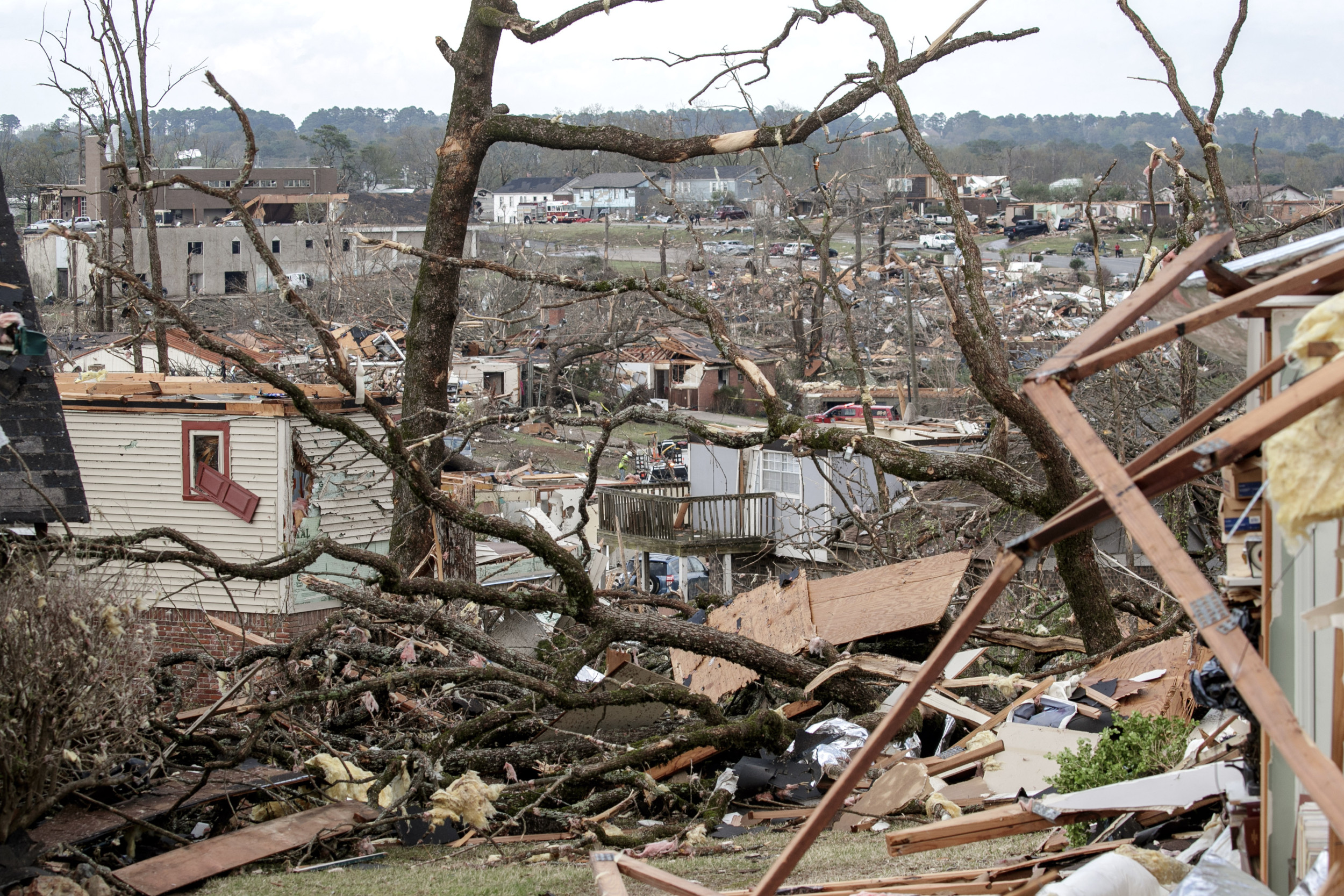Tornado Impact on Rogers, AR

Rogers ar tornado – On March 28, 2023, a devastating tornado ripped through the city of Rogers, Arkansas, leaving behind a trail of destruction. The tornado, rated EF-3 on the Enhanced Fujita Scale, caused widespread damage to homes, businesses, and infrastructure.
The tornado touched down in Rogers at approximately 4:30 p.m. CST and traveled a path of nearly two miles. The most severe damage occurred in the central part of the city, where several homes were completely destroyed and others were left with significant damage. Businesses in the area were also heavily damaged, with many losing their roofs or being completely destroyed.
Impact on Infrastructure, Rogers ar tornado
The tornado also caused significant damage to Rogers’ infrastructure. Power lines were downed, causing widespread power outages. Water mains were also damaged, leaving many residents without access to clean water. The tornado also damaged several roads and bridges, making it difficult for emergency responders to reach affected areas.
Impact on the Community
The tornado had a devastating impact on the Rogers community. Many residents lost their homes and belongings, and several people were injured. The tornado also caused significant economic damage to the city. Businesses were forced to close, and many people lost their jobs.
In the aftermath of the tornado, the Rogers community came together to support those who were affected. Volunteers helped to clean up debris and provide assistance to those who had lost their homes. The city also received support from state and federal agencies.
Community Response and Recovery Efforts

In the aftermath of the devastating tornado, the Rogers community rallied together in an extraordinary display of resilience and compassion. Immediate aid poured in from all corners, as volunteers rushed to assist those in need.
Local organizations, government agencies, and volunteers worked hand-in-hand to coordinate relief efforts. Emergency shelters were established, providing temporary housing and essential supplies to displaced families. Food banks and community kitchens served hot meals and distributed groceries to those affected.
Volunteer Efforts
The outpouring of volunteer support was truly remarkable. Individuals from across the region and beyond dedicated their time and resources to the recovery process. They assisted with debris removal, home repairs, and emotional support for survivors.
Volunteer groups organized themselves into teams, each with a specific focus. Some focused on providing food and shelter, while others specialized in structural repairs or mental health support. The collective efforts of these volunteers played a crucial role in expediting the recovery process.
Long-Term Recovery Plans
As the immediate crisis subsided, the community shifted its focus towards long-term recovery. Local authorities, in collaboration with state and federal agencies, developed comprehensive plans to rebuild damaged infrastructure, restore essential services, and support the economic revitalization of Rogers.
- Infrastructure repairs: Roads, bridges, and utilities were repaired or replaced, ensuring the safety and accessibility of the community.
- Economic revitalization: Grants and low-interest loans were made available to businesses and homeowners to stimulate economic growth and job creation.
- Community resilience: Programs were implemented to enhance community preparedness and resilience, including disaster training and emergency response drills.
Lessons Learned and Preparedness: Rogers Ar Tornado

The Rogers, Arkansas, tornado highlighted the importance of disaster preparedness and response. Key lessons learned from the event include:
1. The need for early warning systems and timely evacuation plans.
2. The importance of community collaboration and coordination in disaster response.
3. The effectiveness of public education campaigns in promoting tornado safety.
Improvements in Disaster Preparedness, Response, and Recovery Strategies
In the wake of the tornado, Rogers, Arkansas, implemented several improvements in disaster preparedness, response, and recovery strategies, including:
- Upgrading the city’s early warning system with new sirens and mobile alert technology.
- Developing a comprehensive evacuation plan and conducting regular drills to ensure residents know what to do in the event of a tornado.
- Establishing a disaster recovery center to provide assistance to affected residents.
- Partnering with local organizations to provide mental health support and other services to survivors.
Recommendations for Future Tornado Preparedness and Mitigation Efforts
Based on the lessons learned from the Rogers, Arkansas, tornado, several recommendations can be made for future tornado preparedness and mitigation efforts:
- Invest in research and development of new and improved tornado detection and warning systems.
- Promote community education and outreach programs to raise awareness of tornado safety.
- Encourage the adoption of building codes that require the use of tornado-resistant materials and construction techniques.
- Develop and implement land-use planning policies that reduce the risk of tornado damage.
By implementing these recommendations, communities can better prepare for and mitigate the impacts of future tornadoes.